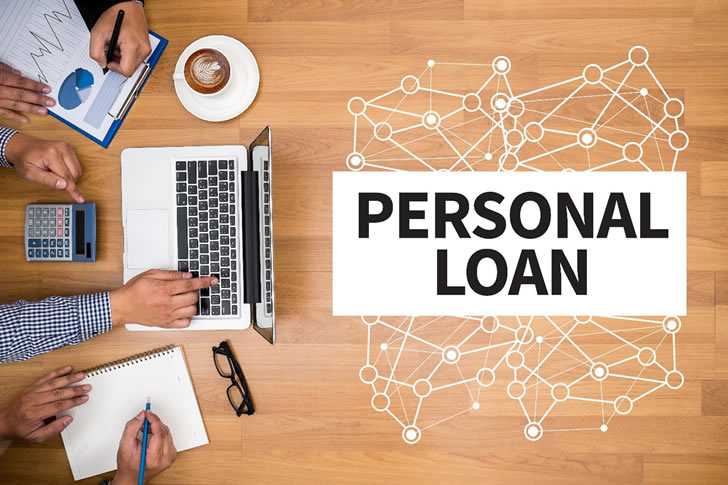Personal finance can be a tricky path to navigate, especially when unexpected expenses arise. We’ve carried out detailed research, you’ll discover that personal loans can be a valuable tool in managing your financial needs.

Understanding Personal Loans:
At some point in our lives, many of us find ourselves in need of extra funds. Whether it’s for unexpected medical bills, home improvements, or a dream vacation, personal loans can provide a lifeline during financial crunches.
What Exactly is a Personal Loan?
A personal loan is a type of loan that allows you to borrow a fixed amount of money from a financial institution, such as a bank, credit union, or online lender. Unlike specific-purpose loans like auto loans or mortgages, personal loans are versatile and can be used for various purposes. These loans are typically unsecured, which means they don’t require collateral, such as your house or car, to secure the loan.
How Do Personal Loans Work?
When you study for a personal loan, the lender assesses your creditworthiness by reviewing your credit score, income, employment history, and other relevant factors. Based on this evaluation, they will determine the loan amount, interest rate, and repayment terms.
Types of Personal Loans:
- Secured Personal Loans: While most personal loans are unsecured, some lenders offer secured personal loans that require collateral, such as a savings account or a certificate of deposit (CD). These loans often come with lower interest rates and more favorable terms, making them an attractive option for those with less-than-perfect credit.
- Unsecured Personal Loans: Unsecured personal loans, on the other hand, don’t require collateral. Lenders rely heavily on your creditworthiness to approve your application. Interest rates for unsecured loans are typically higher, but they offer more flexibility and are widely accessible.
- Fixed-Rate Personal Loans: With a fixed-rate personal loan, your interest rate remains constant throughout the loan term. This means your monthly payments stay predictable, making it easier to budget for your loan repayment.
- Variable-Rate Personal Loans: Variable-rate personal loans have interest rates that can fluctuate based on market conditions. While they may start with lower rates, they can increase over time, potentially impacting your monthly payments.
The Benefits of Personal Loans:
- Flexibility: Personal loans can be used for almost anything, giving you the flexibility to address various financial needs.
- Predictable Payments: Fixed-rate personal loans provide stable monthly payments, allowing you to plan your budget effectively.
- No Collateral Required: Most personal loans are unsecured, so you don’t need to risk your assets.
- Quick Access: Many lenders offer fast approval and funding, making personal loans a suitable option for emergencies.
How to Study for a Personal Loan:
- Check Your Credit: Start by reviewing your credit report and score. A higher credit score can lead to better loan terms.
- See Lenders: Shop around for lenders who offer personal loans. Consider factors such as interest rates, fees, and customer reviews.
- Gather Documentation: Lenders will require proof of income, employment history, and personal identification.
- Submit Your Application: Complete the application process, including providing the necessary documentation.
- Review Loan Offers: Once you receive loan offers, carefully review the terms, interest rates, and repayment plans.
- Choose the Good Option: Select the loan offer that good suits your needs and financial situation.
- Complete the Loan Agreement: After choosing a lender, review and sign the loan agreement.
- Receive Funds: Once the loan is approved, the funds will be deposited into your bank account.
Tips for Responsible Borrowing:
While personal loans can be a helpful financial tool, it’s essential to use them wisely:
- Borrow What You Need: Only take out the amount necessary to cover your expenses.
- Budget for Repayments: Ensure that you can comfortably manage the monthly loan payments within your budget.
- Pay on Time: Timely payments can positively impact your credit score and financial stability.
- Avoid Multiple Loans: Taking out multiple loans simultaneously can lead to financial strain.
Common Misconceptions:
1. Personal Loans Are Only for Those with Excellent Credit: While a good credit score can help secure better terms, ton this page are personal loan options available for individuals with less-than-perfect credit.
2. Personal Loans Are Expensive: While interest rates can be higher seed to some other loan types, personal loans can still offer more budget-friendly rates than credit cards or payday loans.
3. It’s Difficult to Qualify: Many lenders offer personal loans with straightforward application processes, making them accessible to a wide range of borrowers.
Conclusion:
Personal loans can be a valuable financial tool when used responsibly. They provide flexibility, predictable payments, and quick access to funds for various needs. By understanding the different types of personal loans, the application process, and responsible borrowing practices, you can make informed decisions to improve your financial well-being. Whether it’s a medical emergency, home improvement project, or a well-deserved vacation, a personal loan can be the bridge that helps you achieve your goals.


Recent Comments